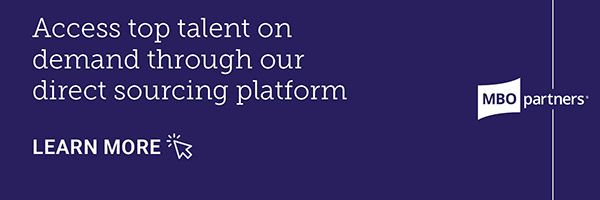4 Ways to Work Effectively with Remote Consultants

Key Points
While it can initially be more difficult to establish relationships without meeting face-to-face, engaging remote independent talent does lend companies some big advantages.
A strong relationship between client and begins by making sure you understand one another, especially if you are solely communicating via phone, email, or video chat.
Take time before a project begins to set realistic and appropriate expectations.
More workers than ever before, particularly independent contractors, are choosing to work remotely. In fact, our research finds that 4.8 million independents currently describe themselves as digital nomads: workers who have chosen to embrace a location-independent, technology-enabled lifestyle that enables them to travel and work remotely, anywhere in the world. And 17 million more aspire to someday become nomadic.
The ability to work remotely is certainly one of the reasons people work independently. However, this flexibility can also raise understandable concerns from enterprise managers about how to effectively track and manage a remote team. While it can initially be more difficult to establish relationships without meeting face-to-face, engaging remote independent talent does lend companies some big advantages.
Expanding your pool of available talent from a single city or state to the world gives you access to the skilled expertise you need no matter where workers are based. The rise of new collaboration technology also makes it easier for companies to expand their national or global presence for less cost and administrative overhead. Follow the five tips below to work easily and effectively with remote independent professionals.
1. Make Sure You Are on the Same Page
A strong relationship between client and begins by making sure you understand one another, especially if you are solely communicating via phone, email, or video chat. By getting to know the independent talent you’ve engaged, you can better resolve pain points and frustrations before they become big issues.
Set expectations and stick to them
Take time before a project begins to set realistic and appropriate expectations. Don’t skip typical onboarding procedures just because your talent is remote—if anything, it is more important to make sure you are aligned on goals from the start when working with someone remotely. Discuss goals, performance objectives, project milestones, and ask and answer any outstanding questions.
2. Plan How You Will Communicate
Outlining a concrete plan for communication is another good way to establish a trusting relationship. By talking through communication preferences before work beings, you can help ward off future misunderstanding and frustration. If there are multiple business units involved in a project, be sure to assign a single point of contact for each department.
Define modes and parameters for communication
A good communication plan will help avoid project delays, and ensure that issues can be discussed and resolved quickly. Schedule a consistent time to check in with the independent talent you engage. A written status update, bi-weekly phone call, or monthly video conference call are all good options. If time zones will be a factor, be conscientious of each other’s work hours and discuss the best way to get in touch in case of an escalation.
3. Embrace Technology to Stay Organized
New technology makes it much easier for managers to arrange real-time collaboration with independent talent, and there are a wide variety of options that can help facilitate remote work.
Use the right tools for your project needs
Project management tools like Basecamp can be useful for maintaining joint to-do lists, calendars, or discussion boards. Dropbox or Google Drive are good options for cloud-based storage systems. WebEx, Slack, or GoToMeeting can be useful communication and meeting tools, especially when working across different regions and time zones. Whatever communication tools you choose to use, make sure that both you and your independent talent are comfortable and familiar with how the tools will be used.
Set and Stick to Deadlines
Adhering to deadlines may sound obvious, but this is an especially important point when working with remote talent. Upholding deadlines on your end will help keep both the project and the independent contractor on track.
Stay accountable and avoid scope creep
Before beginning work on a new major deliverable, take time to review the scope of work again to discuss relevant dates and responsibilities. By reviewing set milestones ahead of time, you can hold one another accountable or discuss additional work that may need to be added to the contract.
4. Don’t Forget the Client-Contractor Relationship
Collaborating with remote workers is all about finding a balance between too much oversight and not enough—especially when engaging independent talent. When working with independents, always remember that you are managing a business-to-business relationship.
Independent contractors are not employees in the eyes of the law
Independent contractors are responsible for managing both the process and the outcome to meet the agreed-upon results outlined in their contract. Always turn back to and rely on the contract when setting expectations and discussing expected outcomes. It’s not your responsibility to oversee what your remote talent is doing with every hour of their workday—instead, measure their performance by the product they produce and the interactions you have with them throughout the process.
Managing remote workers may initially seem like an unnecessary or added challenge, but with preparation and foresight incorporating remote independent talent into your workforce can be both easily manageable and beneficial for your organization.
Related Posts
Trending
Subscribe to our
blog
Get a weekly email of our latest posts sent straight to your inbox
Learn more about the MBO Platform
FOR INDEPENDENT
PROFESSIONALS
Start, run, and grow
your independent business with MBO
FOR
ENTERPRISES
Engage, scale, and optimize
your independent workforce



